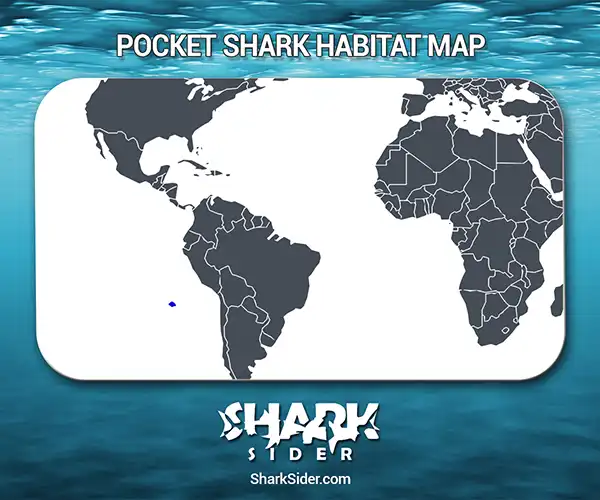Pocket sharks are a recently discovered species of carnivores closely linked to kitefin sharks.
They are one of the only two species of the genus- Mollisquama. The other species- the American pocket shark, was more recently discovered in 2010. The presence of internal pocket-like glands, and not their small size, gives the shark its unique name.
Pocket Shark Scientific Classification |
|
| Kingdom | Animalia |
| Phylum | Chordata |
| Class | Chondrichthyes |
| Order | Squaliformes |
| Family | Dalatiidae |
| Genus | Mollisquama |
| Scientific Name | Mollisquama parini |
Description
These sharks are smaller than other shark species and live in deep waters.
The first specimen caught in 1979 and finally described in 1984 was an adolescent female that measured 16 inches.
They have a cigar-shaped body with a round, balloon-like head instead of a pointed snout. The body is light grayish with a tinge of brown in some areas.
Pocket sharks have strong jaws lined with rows of sharp and pointed teeth.
Like all members of their family, these sharks also have two spineless dorsal fins.
Near the base of each pectoral fin found on both sides, there are small pocked-sized glands larger compared to the shark’s entire body. These glands measure 0.51 in length and 0.20 in width and are of a darker greyish tint when compared to the rest of its body.
Where do they live
Map Of The Pocket Shark’s Habitat

The first pocket shark specimen was discovered off Chile’s coast in 1979 near Nazca Ridge in the southeast Pacific Ocean. A new species belonging to the same genus- the American pocket shark, lives in the northern Gulf of Mexico, along the coast of Louisiana. This information suggests that these sharks are found in an extensive geographical range, especially in the Pacific ocean.
Pocket sharks are bathypelagic sharks that inhabit the deep sea environments, which are dark and cold. The specimen found in 1979 swam at a depth of 1080ft.
Behavior
Reproductive
Pocket sharks are viviparous, i.e., embryo development occurs inside the individual. While inside, the young shark gets nourishment and formulates gaseous exchange through the egg sac of the mother.
Adaptations
The interior lining of pocket glands consists of special cells. Scientific results have concluded that these glands may secrete pheromones to attract the opposite gender and help during mating.
To stun and confuse predators or preys, these sharks also produce a bioluminescent fluid from the pocket glands.
Interactions with humans
There is little known about pocket sharks. Being a deep water species, it has had no incidents of any possible interactions with humans.
Since their population numbers are uncertain, no conservation methods exist to preserve the species.
